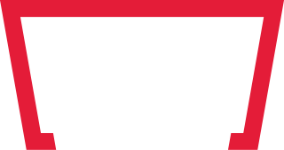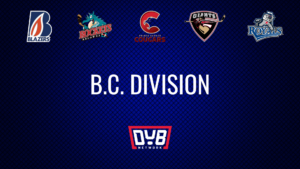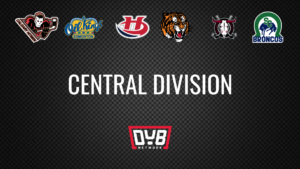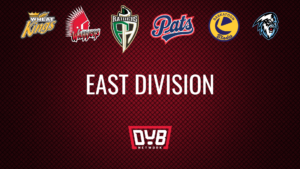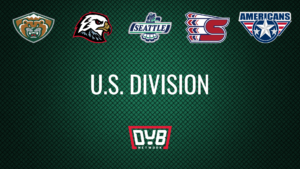A quarter done
With Sunday’s 3-1 loss to the Saskatoon Blades, Moose Jaw completed the first quarter or six games of its 2021 Subway WHL Hub schedule.
The Warriors’ campaign has yielded a record of four wins and two losses so far, good for third in the seven-team division, and perhaps most importantly, a renewed sense of belief and optimism within the organization after the disaster that was last year.
“I think if you (offered) us 4-2 at the start of the year at this point we would have said we were happy with that,” said head coach Mark O’Leary post-game Sunday.
“By no means are we satisfied, or going to be complacent with that, I think we’re certainly a 4-2 hockey club right now, but we still have a lot more growth to be had here. I am really proud of the group in terms of how they’ve come into the Hub, in terms of their preparation, their energy levels, and willingness to compete, but I think as we get going here we’re going to have better starts to games, and put ourselves in better positions to win more than we lose.”
The Warrior Way
O’Leary became the 15th coach in franchise history after the club let Tim Hunter go mid-way through the 2019-2020 season – on Jan. 8, 2020, to be exact. As such, this Hub is his first chance to implement his philosophy with a blank slate, and so far, the players seem to have bought right in.
His way of playing is predicated on wasting no time getting up ice with the puck, in contrast to a lot of teams in the 21st Century who seek to regroup in a controlled, methodical fashion. If the predominant style is to focus on simply maintaining possession of the puck, O’Leary is more interested in where the puck is on the ice.
“When you’re coming up with a style of play,” O’Leary said, “I think it’s best to let it happen naturally in terms of what you have for a roster.
“I think if we have a team hemmed in, and they just manage to get the puck out, we don’t want to bring it way back, and settling things down; we know where we want the puck to go, and we want everyone going in that direction. We’re a pack mentality; if we’re going fast and in the right direction, we feel confident we can outnumber teams with the puck and better our chances.”
Here’s a quick example: look how fast after the Broncos’ turn the puck over the Warriors’ Dman Max Wanner is looking for the forward at the offensive blueline.
Numerous times in the Hub already, a puck dumped into the Moose Jaw zone will be met with a quick response from the sure-handed passing of Boston Bilous in the Warriors’ net or a Warrior defenceman, and a quick snap up to a forward waiting on the side of the ice away from the opposition’s bench where they are changing.
Those young legs are therefore always moving, trying to pounce and take advantage of odd-man situations everywhere on the ice.
“I think for me, it’s about being in control of the puck,” O’Leary continued.
“Sometimes you don’t have to have it on your stick to be in control of it. We use the term ‘chip and charge’ to exit zones, teams are so close-checking sometimes that if you just try to hold and carry the puck all the time, you’re just going to lose it. Our style in the offensive zone is hounding pucks, grinding teams down low, getting it up top to the defenceman, and playing off that point shot. We’re kind of a relentless team that gets the opportunities from our work ethic.”
Moose Jaw’s golden boy
Certainly rare is the interview with O’Leary, or any of the Warriors, that goes by without a Brayden Yager update request.
Through six games, Moose Jaw’s third overall pick in the 2020 WHL draft has a goal, and four points, and has been a solid and important element of the team’s top-6 forward group and power play. Has he been a dominant point-producer, like Connor Bedard? No, but that he has not had to be over a successful start to the campaign is excellent news for the club, since it really speaks to the depth around him.
Brayden Yager tips one home for his first career WHL goal.#SubwayWHLHub pic.twitter.com/stKuZF74Km
— Moose Jaw Warriors (@MJWARRIORS) March 17, 2021
Yager, who currently sits in third place in scoring among WHL rookies behind Bedard and Calgary’s Tristan Zandee, has been out on the ice in many key situations almost from the start as the Warriors have played tight, tense games in a majority of their appearances at the Hub to date.
Clearly, O’Leary has a huge opinion of the 2005-born forward and is thrilled with his development so far.
“I think he’s been great,” O’Leary said.
“I compare him to a Nathan MacKinnon (the Colorado Avalanche star) in terms of that power forward; when you watch Brayden skate with the puck he is over top of it, so it’s hard to knock him off. He’s heavy on it, and he’s often so dangerous to load up that shot. He’s gained the confidence of the coaches, we started him on the wing but he’s been at centre ice lately, which is often tough for the 15 and 16-year-olds to play down low in their own zone. I think those things I just talked about, how he handles the puck and protects it, his hockey sense to get in the right places, makes it all possible.”
Take a look at Brayden Yager's shootout winner from last night.#SubwayWHLHub pic.twitter.com/knVtCKnuIe
— Moose Jaw Warriors (@MJWARRIORS) March 15, 2021
Yager has spoken in public about how he prefers to focus on his own game, getting better and chasing his own greatness, instead of worrying about what Connor Bedard is doing; yet, the potential for that rivalry between Moose Jaw and Regina’s young stars continues to be far from lost on O’Leary.
“I think it’s a healthy thing to have (that competition between Yager and Bedard),” O’Leary said.
“I get more excited when we’re playing Regina just naturally because of that rivalry, so I’m sure Brayden gets a little more excited when he goes up against Connor on the other side. I don’t want to speak for him, but on the outside, I don’t see any nerves or anxieties about trying to compete directly with Bedard. He’s a confident kid, a good confident, and I think he knows what he’s capable of. I think he’s handled all this well, that’s what makes him able to play at such a young age: his maturity physically and mentally, and he just keeps telling me he’s having a blast.”
A powerful power play
There are two ways to look at it.
On one hand, the Warriors’ power play, quarterbacked by a true pro in Daemon Hunt, has been red hot so far, humming along at an East Division-best 32 percent. On the other hand, the man-advantage has counted for a whopping 42 percent of Moose Jaw’s offence (eight of 19 goals), the highest power-play reliance clip in the Regina Hub.
Daemon Hunt (@DaemonHunt22) with a rocket of a one-timer for the 4th goal of the game.
#SubwayWHLHub pic.twitter.com/pPBnHAGz8V
— Moose Jaw Warriors (@MJWARRIORS) March 21, 2021
O’Leary sees the glass half-full in this situation.
“We’re not concerned (about creating more chances five-on-five) yet,” he said.
“Six games in, we’ve only played every team once, and how the game is dictated, you need to score whenever you can. I think we’ve been good overall, it’s all a small sample size so far, and if we get to the halfway point and it’s still the case, then maybe we look at that. We are aware that if you look at successful teams over time, their ability to score five-on-five is very important.”
A needed and pleasant surprise on D
When the puck dropped on the season March 12 vs. Brandon, O’Leary and his staff likely had a pretty good idea that Captain Daemon Hunt, fresh from the Iowa Wild of the American Hockey League, and star rookie Denton Mateychuk would be reliable. After that, they were hoping people would step up for some depth from defenceman #3 down.
While NHL draft hopefuls Cole Jordan and Cory King were expected to have their moments, and they have, not a ton was known about how 2003-born 6-foot-3, 180 pound Max Wanner would fare in a full-time role, or even if he would have one.
Fast forward to Sunday and Game 6 of the Hub vs. the mighty Saskatoon Blades and the rookie straight out of the Moose Jaw Warriors U18 AAAs is a mainstay on the right side of the second pair with Jordan.
“Max has absolutely climbed pretty quick,” O’Leary said.
“He’s a great example of how nice it is to have that relationship with the AAA Warriors right next door to us. He also came out of the Prairie Hockey Academy (in nearby Caronport, SK) where (assistant coach) Scott King works closely, so that’s where we got the heads up in terms of listing him.”
Here Max separates a Raider from the puck, and then leaves a piece of him on the glass.
“What makes him great is a lot of the things you see with Daemon Hunt: the ability to defend with their feet and stick,” O’Leary continued.
“If you watch him defend, he so often skates forward. He takes inside ice with a great big reach, forces guys to the outside, and has that snot that he plays with where he angles guys off and finishes hard. He also has the skating ability to get up the ice, and a shot as good as anyone on the team… so I think as he has gained confidence here we have seen more and more about what he is going to be and what he can do already and it’s exciting for a 17-year-old kid.”
Check out the whole conversation with Coach O’Leary here.
